This website uses cookies so that we can provide you with the best user experience possible. Cookie information is stored in your browser and performs functions such as recognising you when you return to our website and helping our team to understand which sections of the website you find most interesting and useful.
Home Care In Maggie Valley, NC

They say that your golden years are the best years of your life. For most older Americans, that's how it should be - a time to relax, reflect, and live life in a familiar place. After all, senior citizens in the U.S. have worked tirelessly to build a better economy, serve their communities, and raise families.
Unfortunately, many older Americans aren't able to rely on their adult children for help. The reality in today's world is that family members do not have the skills or time to dedicate to caring for their parents. That's where Always Best Care Senior Services comes in.
Our in-home care services are for people who prefer to stay at home as they grow older but need ongoing care that family or friends cannot provide. More and more older adults prefer to live far away from long-term, institutionalized facilities and closer to the place where they feel most comfortable - their home. Home care in Maggie Valley, NC is a safe, effective way to give your loved ones the care they need when they need it the most.

 Home Care Services
Home Care Services
- Home Care in Maggie Valley, NC
- The Always Best Care Difference
- Types of In-home Care in Maggie Valley, NC
- Benefits of Home Care in Maggie Valley, NC
- Aging in Place: The Preferred Choice for Most Seniors
- Affordable Care Plans
- Compassionate Care. Trusted Caregivers
- Assisted Living Referral Services
- Taking the First Step with Always Best Care
 Service Areas
Service Areas
The Always Best Care Difference
Since 1996, Always Best Care has provided non-medical in-home care for seniors to help them maintain a healthy lifestyle as they get older. We are proud to have helped more than 25,000 seniors maintain higher levels of dignity and respect. We focus on providing seniors with the highest level of in-home care available so that they may live happily and independently.
Unlike some senior care companies, we genuinely want to be included in our clients' lives. We believe that personalized care is always the better option over a "one size fits all" approach. To make sure our senior clients receive the best care possible, we pair them with compassionate caregivers who understand their unique needs. That way, they may provide care accordingly without compromising their wellbeing.
The Always Best Care difference lies in life's little moments - where compassionate care and trustworthy experience come together to help seniors live a fruitful, healthy life. Whether you are an aging adult that can't quite keep up with life's daily tasks or the child of a senior who needs regular in-home services, Always Best Care is here to help.
“I am a current client of this provider They help with the needs that we have. It”
“I am a current client of this provider I like my caregiver. They've made my experience positive”
“I am a current client of this provider I feel comfortable with them so far. I don't”
“ABC has provided care for my client for 5-6 years. They have been great! Melisa”
“Always Best Care for Seniors has served my clients well based on feedback received. They”
“I am a current client of this provider Belinda has done everything I have asked and”
“I am a current client of this provider They are courteous, polite, kind and hard-working. It helps”
“I am a current client of this provider I liked the intake interview lady. Mary, the”
“I am a current client of this provider I like that they are flexible and the”
“The team with Always Best Care were instrumental in the assistance with my mom during”
“I'm a new hire and the office staff is wonderful, informative and thorough. I feel”
“I am a current client of this provider I couldn't have a life without them. They”
“I am a current client of this provider This helps us both be more refreshed and”
“I am a current client of this provider They have helped tremendously with her sadness. I like”
“Always Best Care was always responsive to our family’s caregiving and respite needs. They created”
“I am a past client of this provider They have helped the most with just providing”
“I am a current client of this provider They help the most by talking to him. They're”
“I am a current client of this provider They provide me with company. They make you feel”
“I am a current client of this provider I can depend on her coming and being”
“I am a past client of this provider Always Best Care Seniors Services provide the personal”
“I'm so happy to have such a professional and reliable agency that I can refer”
“Always Best Care Seniors Services provide the personal touch in-home care! From our initial”
“Highly professional and very caring. A great company”
“Highly professional and very caring. A great company”
“I love this company. They are always very responsive. They truly care about the ones”
“I am a current client of this provider They help with the needs that we have. It gives me time to go to the grocery store.”
“I am a current client of this provider I like my caregiver. They've made my experience positive by sending me Barbara.”
“I am a current client of this provider I feel comfortable with them so far. I don't have any problems getting things done when the caregivers show up.”
“ABC has provided care for my client for 5-6 years. They have been great! Melisa and Autumn have given extra effort and care to assist with managing my client's needs. I don't know how I would have made it without them.”
“Always Best Care for Seniors has served my clients well based on feedback received. They take the time to assess the needs of caregivers and care recipients alike and establish a detailed person-centered plan of care that addresses the care needs and wellbeing of the care recipient. This approach builds rapport and confidence with the caregiver and emphasizes respite for the caregiver while meeting the care recipients’ needs.”
“I am a current client of this provider Belinda has done everything I have asked and more. Belinda has gone above the call of duty.”
“I am a current client of this provider They are courteous, polite, kind and hard-working. It helps keep him interactive with people.”
“I am a current client of this provider I liked the intake interview lady. Mary, the nurse, is very encouraging. Their presence is helpful because I can't be there.”
“I am a current client of this provider I like that they are flexible and the people that they provide have been good so far. They have removed a lot of stress from my life.”
“The team with Always Best Care were instrumental in the assistance with my mom during her decline and eventual passing. They were thoughtful, kind, supportive, considerate and readily available. Mary, one of the nurse managers at the Asheville location, was so supportive it is as if she became family. She would come without hesitation as I navigated through this difficult time offering tremendous support. She not only foresaw what was needed, but understood what I needed and catered to that need. She is a tremendous asset to your team! I am forever grateful for her.”
“I'm a new hire and the office staff is wonderful, informative and thorough. I feel like this will be a most rewarding opportunity.”
“I am a current client of this provider I couldn't have a life without them. They do the cooking and everything for me. One was a poor caregiver and the other was good.”
“I am a current client of this provider This helps us both be more refreshed and get breaks from each other. I like the fact that they seem to be a Christian-based organization. That comes through with the care that is provided.”
“I am a current client of this provider They have helped tremendously with her sadness. I like how I can call, get a person and not just a recording.”
“Always Best Care was always responsive to our family’s caregiving and respite needs. They created a thorough and detailed individual care plan with us that addressed all of our concerns and caregiving requirements. Our caregiver Elaine was fantastic. She is genuinely caring, compassionate, friendly, and engaging. My father was always excited when Elaine came to the house. They would talk for hours, laugh, play games, do puzzles, look at photo albums, and watch all kinds of sports together including tennis, football, soccer, and basketball. He said that Elaine made the best peanut butter and jelly sandwiches too. She even stopped by to check on us after hurricane Helene to make sure that we were ok. I fully recommend Always Best Care to any family needing respite and caregiving services for their loved ones. They are truly the Best!”
“I am a past client of this provider They have helped the most with just providing me really good care and there was a never struggle with them. I liked that Always Best Care was always very kind and worked with me very easily.”
“I am a current client of this provider They help the most by talking to him. They're very good about doing what they are supposed to be doing.”
“I am a current client of this provider They provide me with company. They make you feel comfortable.”
“I am a current client of this provider I can depend on her coming and being there. They are very responsive and do what they say they're going to do and are dependable.”
“I am a past client of this provider Always Best Care Seniors Services provide the personal touch in-home care! From our initial call inquiring about services, to meeting staff to discuss our unique family needs, to the caring compassionate and understanding caregivers we are thoroughly impressed. Its such a relief knowing our loved ones are receiving the care they deserve.”
“I'm so happy to have such a professional and reliable agency that I can refer my caregivers to and know that they will receive the service they need to assist with the care of their loved ones with dementia,”
“Always Best Care Seniors Services provide the personal touch in-home care! From our initial call inquiring about services, to meeting the owner Jim Smeaton to discuss our unique family needs, to the caring compassionate and understanding caregivers we are thoroughly impressed. Its such a relief knowing our loved ones are receiving the care they deserve.”
“Highly professional and very caring. A great company”
“Highly professional and very caring. A great company”
“I love this company. They are always very responsive. They truly care about the ones that they care for.”
What is Non-Medical Senior Care in Maggie Valley, NC?

Home is where the heart is. While that saying can sound a tad cliche, it is especially true for many seniors living in America. When given a choice, older adults most often prefer to grow older at home. An AARP study found that three out of four adults over the age of 50 want to stay in their homes and communities as they age.

When you begin to think about why, it makes sense. Home offers a sense of security, comfort, and familiarity.

The truth is, as we age, we begin to rely on others for help. When a family is too busy or lives too far away to fulfill this role, in-home senior care is often the best solution. Home care services allow seniors to enjoy personal independence while also receiving trustworthy assistance from a trained caregiver.

At Always Best Care, we offer a comprehensive range of home care services to help seniors stay healthy while they get the help they need to remain independent. As your senior loved one gets older, giving them the gift of senior care is one of the best ways to show your love, even if you live far away.

Types of Elderly Care in Maggie Valley, NC
To give our senior clients the best care possible, we offer a full spectrum of in-home care services:

Personal Care Services
If your senior loved one has specific care needs, our personal care services are a great choice to consider. Personal care includes the standard caregiving duties associated with companion care and includes help with tasks such as dressing and grooming. Personal care can also help individuals with chronic conditions like diabetes.
Common personal care services include assistance with:
- Eating
- Mobility Issues
- Incontinence
- Bathing
- Dressing
- Grooming


Home Helper Services
Sometimes, seniors need helpful reminders to maintain a high quality of life at home. If you or your senior has trouble with everyday tasks like cooking, our home helper services will be very beneficial.
Common home helper care services include assistance with:
- Medication Reminders
- Meal Preparation
- Pet Care
- Prescription Refills
- Morning Wake-Up
- Walking
- Reading


Companionship Services
Using this kind of care is a fantastic way to make life easier for you or your senior loved one. At Always Best Care, our talented caregivers often fill the role of a companion for seniors.
Common companionship services include:
- Grocery Shopping
- Transportation to Appointments
- Nutritional Assistance
- Conversation
- Planning Outings
- Completing Errands
- Transportation to Community
- Events and Social Outings


Respite Care Services
According to AARP, more than 53 million adults living in the U.S. provide care to someone over 50 years old. Unfortunately, these caregivers experience stress, exhaustion, and even depression. Our respite care services help family caregivers address urgent obligations, spend time with their children, and enjoy nearby activities. Perhaps more importantly, respite care gives family members time to recharge and regroup. Taking personal time to de-stress reduces the risk of caregiver burnout. Doing so is great for both you and your loved one.
At the end of the day, our goal is to become a valuable part of your senior's daily routine. That way, we may help give them the highest quality of life possible. We know that staying at home is important for your loved one, and we are here to help make sure that is possible.
If you have been on the fence about non-medical home care, there has never been a better time than now to give your senior the care, assistance, and companionship they deserve.

Benefits of Home Care in Maggie Valley, NC
Always Best Care in-home services are for older adults who prefer to stay at home but need ongoing care that friends and family cannot provide. In-home care is a safe, effective way for seniors to age gracefully in a familiar place and live independent, non-institutionalized lives. The benefits of non-medical home care are numerous. Here are just a few reasons to consider senior care services from Always Best Care:
Always Best Care offers a full array of care options for patients at all levels of health. With our trusted elderly care services, your loved one will receive the level of care necessary for them to enjoy the highest possible quality of life.
Request More Information
Aging in Place: The Preferred Choice for Most Seniors
While it's true that some seniors have complicated medical needs that prevent them from staying at home, aging in place is often the best arrangement for seniors and their families. With a trusted caregiver, seniors have the opportunity to live with a sense of dignity and do so as they see fit - something that is unavailable to many older people today.
In-home care makes it possible for millions of seniors to age in place every year. Rather than moving to a strange nursing home, seniors have the chance to stay at home where they feel the happiest and most comfortable.
Here are just a few of the reasons why older men and women prefer to age at home:
How much does a senior's home truly mean to them?
A study published by the American Society on Aging found that more than half of seniors say their home's emotional value means more than how much their home is worth in monetary value. It stands to reason, then, that a senior's home is where they want to grow old.
With the help of elderly care in Maggie Valley, NC, seniors don't have to age in a sterilized care facility. Instead, they can age gracefully in the place they want to be most: their home. In contrast, seniors who move to a long-term care facility must adapt to new environments, new people, and new systems that the facility implements. At this stage in life, this kind of drastic change can be more harmful than helpful.
Institutional care facilities like nursing homes often put large groups of people together to live in one location. On any given day, dozens of staff members and caregivers run in and out of these facilities. Being around so many new people in a relatively small living environment can be dangerous for a seniors' health and wellbeing. When you consider that thousands of seniors passed away in nursing homes during the COVID-19 pandemic, opting for in-home care is often a safer, healthier choice for seniors.
Aging in place has been shown to improve seniors' quality of life, which helps boost physical health and also helps insulate them from viral and bacterial risks found in elderly living facilities.
For many seniors, the ability to live independently with assistance from a caregiver is a priceless option. With in-home care, seniors experience a higher level of independence and freedom - much more so than in other settings like a nursing home. When a senior has the chance to age in place, they get to live life on their own terms, inside the house that they helped make into a home. More independence means more control over their personal lives, too, which leads to increased levels of fulfillment, happiness, and personal gratification. Over time, these positive feelings can manifest into a healthier, longer life.
More independence, a healthier life, and increased comfort are only a few benefits of aging in place. You have to take into consideration the role of cost and convenience. Simply put, it's usually easier and more affordable to help seniors age in place than it is to move them into an institutional care facility. According to the US Department of Housing and Urban Development, seniors who age in the comfort of their homes can save thousands of dollars per month.
In-home care services from Always Best Care, for instance, are often less expensive than long-term solutions, which can cost upwards of six figures per year. To make matters worse, many residential care facilities are reluctant to accept long-term care insurance and other types of payment assistance.
With Always Best Care's home care services, seniors and their families have a greater level of control over their care plans. In-home care gives seniors the chance to form a bond with a trusted caregiver and also receive unmatched care that is catered to their needs. In long-term care facilities, seniors and their loved ones have much less control over their care plan and have less of a say in who provides their care.

Affordable Care
In-home care is a valuable resource that empowers seniors to age in place on their own terms. However, a big concern for many families and their loved ones is how much in-home care costs. If you're worried that in-home care is too expensive, you may be pleasantly surprised to learn that it is one of the most affordable senior care arrangements available.
Typically, hiring an Always Best Care in-home caregiver for a few hours a week is more affordable than sending your loved one to a long-term care facility. This is true even for seniors with more complex care needs.
At Always Best Care, we will work closely with you and your family to develop a Care Plan that not only meets your care needs, but your budget requirements, too. Once we discover the level of care that you or your senior need, we develop an in-home care plan that you can afford.
In addition to our flexible care options, families should also consider the following resources to help offset potential home care costs:

Compassionate Care. Trusted Caregivers.
When you or your senior loved one needs assistance managing daily tasks at home, finding a qualified caregiver can be challenging. It takes a special kind of person to provide reliable care for your senior loved one. However, a caregiver's role involves more than meal preparation and medication reminders. Many seniors rely on their caregivers for companionship, too.
Our companion care services give seniors the chance to socialize in a safe environment and engage in activities at home. These important efforts boost morale and provide much-needed relief from repetitive daily routines. A one-on-one, engaging conversation can sharpen seniors' minds and give them something in which to be excited.
At Always Best Care, we only hire care providers that we would trust to care for our own loved ones. Our senior caregivers in Maggie Valley, NC understand how important it is to listen and communicate with their seniors. A seemingly small interaction, like a short hug goodbye, can make a major difference in a senior's day. Instead of battling against feelings of isolation, seniors begin to look forward to seeing their caregiver each week.
Understanding the nuances of senior care is just one of the reasons why our care providers are so great at their job.
Unlike some senior care companies, our caregivers must undergo extensive training before they work for Always Best Care. In addition, our caregivers receive ongoing training throughout the year. This training ensures that their standard of care matches up to the high standards we've come to expect. During this training, they will brush up on their communication skills, safety awareness, and symptom spotting. That way, your loved one receives the highest level of non-medical home care from day one.
Assisted Living Referral Services
While it's true that many seniors prefer to age at home, sometimes in-home care isn't the best fit. For those seniors and their families, choosing an assisted living facility makes more sense. Unfortunately, finding the optimal care facility is easier said than done in today's day and age. That's when Always Best Care's assisted living referral services begin to make a lot of sense.
Assisted living is a form of housing intended for seniors who require varying degrees of medical and personal attention. Accommodations may include single rooms, apartments, or shared living arrangements. Assisted living communities are typically designed to resemble a home-like environment and are physically constructed to encourage the independence of residents.

At assisted living communities, seniors receive help with daily activities such as bathing, dressing, and eating. They may also benefit from coordination of services with outside healthcare providers, and monitoring of resident activities to ensure their health, safety, and well-being. Caregivers who work at assisted living communities can also provide medication administration and personal care services for older adults.
Other services offered within assisted living communities can include some or all of the following:
- Housekeeping
- Laundry
- Recreational Activities
- Social Outings
- Emergency Medical Response
- Medication Monitoring
- Family Visitation
- Personal Care

At Always Best Care, our representatives can match your senior's emotional, physical, and financial needs with viable assisted living communities nearby. Results are based on comparative data, so you can select the best choice for you or your loved one.
Always Best Care works closely with local senior living communities to gain valuable knowledge that we then use to help seniors and their loved ones make informed decisions. This information can include basic care and rent, resident availability, and services provided. Because Always Best Care is compensated by these communities, we provide senior living referral services at no extra cost to you.

For many seniors, moving into a senior living community revolves around how and when they want to make a transition to more involved care. Some seniors are more proactive about transitioning to independent living. Others choose to remain home until their care needs or other requirements are satisfied. Remember - our staff is here to help. Contact our office today to learn more about assisted living communities and how we can find a facility that exceeds your expectations.

Taking the First Step with Always Best Care
The first step in getting quality in-home care starts with a personal consultation with an experienced Always Best Care Care Coordinator. This initial consultation is crucial for our team to learn more about you or your elderly loved one to discover the level of care required. Topics of this consultation typically include:
A discussion of your needs and how our trained caregivers can offer assistance in the most effective way

A draft of your care plan, which includes highly detailed notes and a framework for the care that you or your senior will receive

Discuss payment options and help coordinate billing with your insurance provider

Our caregivers are trained to spot changes that clients exhibit, like mental and physical decline. As your trusted senior care company, we will constantly assess and update your Care Plan to meet any new emotional, intellectual, physical, and emotional needs.
If you have never considered in-home care before, we understand that you and your family may have concerns about your Care Plan and its Care Coordinator. To help give you peace of mind, know that every team member and caregiver must undergo comprehensive training before being assigned to a Care Plan.
At the end of the day, we only hire the best of the best at Always Best Care. Whether you need home care in Maggie Valley, NC 24-hours a day or only need a respite for a couple of hours, we are here to serve you.
When you're ready, we encourage you to contact your local Always Best Care representative to set up a Care Consultation. Our Care Coordinators would be happy to meet with you in person to get to know you better, discuss your needs, and help put together a personalized Care Plan specific to your needs.

Latest News in Maggie Valley, NC
Fall color is on full display in western North Carolina; Leaves peaking this week
Michelle Kennedyhttps://www.wxii12.com/article/fall-color-imelda/68135377
Before you head out the door to view fall color, please make sure you check conditions first and make reservations for Grandfather Mountain as spots book up quickly. Here's a look at current conditions and wind gust speeds in the mountains.Wind Gust Speed in Miles Per Hour: Appalachian Mountains in North CarolinaCurrent Temperature, Radar and Alerts"Fall Color Guy" says to head to the mountains this week | Peak color at high elevations is underwayMost of the peak fall color will follow the typical ...
Before you head out the door to view fall color, please make sure you check conditions first and make reservations for Grandfather Mountain as spots book up quickly. Here's a look at current conditions and wind gust speeds in the mountains.
Wind Gust Speed in Miles Per Hour: Appalachian Mountains in North Carolina
Current Temperature, Radar and Alerts
"Fall Color Guy" says to head to the mountains this week | Peak color at high elevations is underway
Most of the peak fall color will follow the typical timing for North Carolina's mountains according to local fall color expert, Howard S. Neufeld, a professor and researcher at Appalachian State University.
Typically, we anticipate fall color peaking in North Carolina's High Country anywhere from early October to the middle of the month, but Neufeld says the early September chill caused some trees to show vibrant color earlier than usual in a few spots around the Blue Ridge Parkway. He also remarked in early posts that along the Appalachian Mountain tops in isolated spots, leaves have already dropped from August and September drought conditions.
Here's more from the "Fall Color Guy"
Neufeld has a doctorate in forest science and researches plant ecophysiology. He's better known to most around North Carolina as the "Fall Color Guy." His Fall Color Guy Facebook announcements of ground reports and forecasts along the Blue Ridge Parkway help drive tourism this time of the year by predicting whether the weather will help encourage peak fall color to show early or delay it.
While areas along the Blue Ridge Parkway may be peaking at the higher elevations, there are will still be great viewing down in lower elevations and into the Foothills through the next ten to 14 days as lots of green is still showing in the forests.
Check for road closures along the Blue Ridge Parkway here and tips from the National Park Service rangers for planning your trip.
Neufeld also recommends this quick read on what fall color is all about from the Farmer's Almanac.
Typical fall color season times in North Carolina and peak times
Fall color from Elkin, North Carolina, in November of 2024
The Pacific Northwest and Rocky Mountain regions, according to scientists with explorefall.com, and they claim that their forecast model has a three-day accuracy for fall color prediction of 80%. Explore Fall forecasters are now able to use fall foliage remote sensing data and incorporate those real-time color developments into their model.
Where fall color may appear during the next seven days in the U.S.
Aspen in Autumn from Rocky Mountain National Park
The forecast for the next seven days from Explore Fall shows that the Rocky Mountains and the Northwest color change will be underway. Otherwise, a tree's main cue to change colors is dependent on shorter days that develop in fall as we approach winter. We will update you as fall color reports arrive. You can also share your fall color with us here on the WXII 12 News Facebook group: ulocal North Carolina.
Most of the year, our leaves are green. This is because of something called chlorophyll. Chlorophyll allows trees to absorb energy from the sun and make food through photosynthesis. This is how the tree gets nutrients and stays healthy. As the seasons change, temperatures get cooler and days get shorter. Trees get less direct sunlight, and the chlorophyll in their leaves begins to break down. The lack of chlorophyll is what causes those yellow, orange, and red pigments in the leaves to be revealed. How quickly the leaves change varies around the world. The weather can also have an effect on fall foliage. The best colors usually come when the weather is sunny, cool, and just the right amount of rainfall. Fall colors around Winston-Salem and Greensboro usually peak in late October and early November, while colors in the mountains usually peak sooner, thanks to the higher elevation and cooler temperatures.
Fall color in North Carolina and Virginia; When leaves will peak in the High Country
Michelle Kennedyhttps://www.wxii12.com/article/fall-color-imelda/68135377
WINSTON-SALEM, N.C. —"Fall Color Guy" predicts peak begins around Oct. 10 weekend in North CarolinaMost of the peak fall color is expected to be on track for most of North Carolina's mountains, but there are signs some spots are showing vibrant color early this year, according to local fall color expert, Howard S. Neufeld, a professor and researcher at Appalachian State University.Typically, we anticipate fall color peaking in North Carolina's High Country anywhere from early October to...
WINSTON-SALEM, N.C. —
"Fall Color Guy" predicts peak begins around Oct. 10 weekend in North Carolina
Most of the peak fall color is expected to be on track for most of North Carolina's mountains, but there are signs some spots are showing vibrant color early this year, according to local fall color expert, Howard S. Neufeld, a professor and researcher at Appalachian State University.
Typically, we anticipate fall color peaking in North Carolina's High Country anywhere from early October to the middle of the month, but Neufeld says the early September chill caused some trees to show vibrant color earlier than usual in a few spots around the Blue Ridge Parkway along the Appalachian Mountain tops.
Neufeld has a doctorate in forest science and researches plant ecophysiology. He's better known to most around North Carolina as the "fall color guy." His Fall Color Guy Facebook announcements of ground reports and forecasts along the Blue Ridge Parkway help drive tourism this time of the year by predicting whether the weather will help encourage peak fall color to show early or delay it.
Neufeld explained in a recent post that the cool mornings and mild afternoons early in September may have allowed for some early peak color at the higher elevations. He noted Craggy Gardens and Graveyard Fields were good viewing spots in mid-September, but color, he believes, will begin its most vibrant show below the highest mountain tops of the Appalachian Mountains by the second weekend of October. Just last week, his post suggested early pops of leaf color were beginning to appear below near Grandfather Mountain, but that lots of green is still showing in the forests.
Neufeld also recommends this quick read on what fall color is all about from the Farmer's Almanac.
Typical fall color season times in North Carolina and peak times
Fall color from Elkin, North Carolina, in November of 2024
The Pacific Northwest and Rocky Mountain regions, according to scientists with explorefall.com, and they claim that their forecast model has a three-day accuracy for fall color prediction of 80%. Explore Fall forecasters are now able to use fall foliage remote sensing data and incorporate those real-time color developments into their model.
Where fall color may appear during the next seven days in the U.S.
Aspen in Autumn from Rocky Mountain National Park
The forecast for the next seven days from Explore Fall shows that the Rocky Mountains and the Northwest color change will be underway. Otherwise, a tree's main cue to change colors is dependent on shorter days that develop in fall as we approach winter. We will update you as fall color reports arrive. You can also share your fall color with us here on the WXII 12 News Facebook group: ulocal North Carolina.
Most of the year, our leaves are green. This is because of something called chlorophyll. Chlorophyll allows trees to absorb energy from the sun and make food through photosynthesis. This is how the tree gets nutrients and stays healthy. As the seasons change, temperatures get cooler and days get shorter. Trees get less direct sunlight, and the chlorophyll in their leaves begins to break down. The lack of chlorophyll is what causes those yellow, orange, and red pigments in the leaves to be revealed. How quickly the leaves change varies around the world. The weather can also have an effect on fall foliage. The best colors usually come when the weather is sunny, cool, and just the right amount of rainfall. Fall colors around Winston-Salem and Greensboro usually peak in late October and early November, while colors in the mountains usually peak sooner, thanks to the higher elevation and cooler temperatures.
Fall Foliage: When's the best time to visit the NC Mountains?
Claire Fryhttps://www.wfmynews2.com/article/weather/fall-foliage-whens-the-best-time-to-visit-the-nc-mountains-north-carolina-color-leaves-red-orange-green-elevation-piedmont-triad-autumn/83-753feeb1-c0d0-4227-991e-a46797935c2f
Higher elevations are already at or near peak color.GREENSBORO, N.C. —If you’ve been up in the North Carolina mountains lately, you’ve probably noticed the fall colors starting to pop, especially in the higher elevations. Bright yellows, oranges, and reds are appearing on ridgelines, creating a breathtaking autumn landscape. The higher peaks are currently showing the best color, giving visitors and photographers some of the season’s most vivid views.Wed...
Higher elevations are already at or near peak color.
GREENSBORO, N.C. —
If you’ve been up in the North Carolina mountains lately, you’ve probably noticed the fall colors starting to pop, especially in the higher elevations. Bright yellows, oranges, and reds are appearing on ridgelines, creating a breathtaking autumn landscape. The higher peaks are currently showing the best color, giving visitors and photographers some of the season’s most vivid views.
Wed, Oct. 8th: Fall colors are starting to pop in higher elevations! Check out the view this afternoon in Maggie Valley, NC. pic.twitter.com/w0bSxL5nGy
— Claire Fry (@clairefrywx) October 8, 2025
Right now, the best color is above 4,000 to 5,000 feet, including spots like Grandfather Mountain, Mount Mitchell, and the upper stretches of the Blue Ridge Parkway. These areas are near or just past peak, with stunning fall foliage that’s already catching the eye of leaf-peepers.
Over the next week or two, the vibrant colors will gradually move down to the mid-elevations, around 3,000 to 4,000 feet, in towns like Boone and Blowing Rock. By the end of October, the lower valleys and foothills will also begin to show their autumn glow, meaning there’s plenty of time to plan a leaf-peeping trip.
If you’re planning a trip, the next 7 to 10 days are ideal for mid-elevation color, while higher peaks are already showing their peak beauty. By late October, even the lower valleys and foothills will be glowing in golds and reds, creating a stunning view for travelers and photographers alike.
Weather plays a huge role in how bright the colors appear. Sunny, warm days and clear, cool nights produce the most vivid reds, while cloudy days, heavy rain, strong winds, or unusually warm nights can dull the display or shorten the peak. Fortunately, the recent crisp, calm nights in the mountains are perfect for color development, meaning we’re in for a strong show this year.
Disclaimer:


 828-676-2939
828-676-2939





